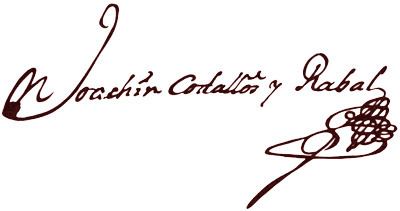 | ||
Profession Spanish soldier and governor of colonial New Mexico | ||
Joaquín Codallos y Rabal was a Spanish soldier who served as the Spanish colonial governor of Santa Fe de Nuevo México province (present day New Mexico) from 1743 and 1749, located in the northern Viceroyalty of New Spain (colonial México).
Contents
Career
Codallos y Rabal joined the Spanish Army in his youth, soon achieving the rank of Major. In 1743, he was appointed governor of Santa Fe de Nuevo Mexico.
Trade, justice, and policy measures
After assuming the charge of governor of Santa Fe de Nuevo México, Codallos started to issue new laws. They included banning illegal trade and gambling, and the posting of notices for caravans that came from elsewhere in New Spain.
Residents in Albuquerque presented a petition to the governor, asking for permission to sell wool locally and as an export. This sparked a debate among officials of the city of Santa Fe, which led to acceptance of the wool trade and beginning of a trade route between Albuquerque, Santa Fe, and Santa Cruz within the province. Some of the excess wool was exported to outlying regions of the province and other provinces within New Spain, providing favorable commerce for Santa Fe de Nuevo México.
In 1745, Codallos made a "vista general" (general visit), traveling across all the towns and cities of the province and asking the inhabitants to send him a list of their problems. After this, the population gathered in the square of Santa Fe, where the governor invited them to voice complaints against local officials or the government. Codallos y Rabal visited most towns and all Spanish settlements, with the exceptions of the distant "villages" of the Acoma Pueblo and Zuni people. The visit benefited the natives more than the Spanish settlers who lived there, and left the province in peaceable condition.
During the tenure of Codallos, crime increased slightly. A major case of crime in the Codallos government was instigated by Manuel Sanz de Garvisu, who caused an insurrection and disobeyed the governor. As a result, Sanz de Garvisu was seized and sent to Chihuahua with an armed escort. He was then sent to Mexico City to be tried before the viceroy.
Relations with the Native Americans
Early in the governor's term, Codallos proposed a campaign against the Native American people. He forbade the mistreatment of women and children, but only while campaigns were ongoing. There are no records of additional campaigns. Later, Codallos prepared an unsuccessful campaign against the Gila Apache people. In 1745, Codallos authorized sending troops on an Indian reductions "crusade for Christianity," led by the priest Carlos Delgado and José de Yrigoyen, to the Moquis people. This conversion attempt was unsuccessful.
Codallos often fought the Utes and Comanches. In October, 1747, Codallos (according to the historian L. Bradford Prince) "killed 107, captured 206, and secured about 1000 horses". In 1748, he ordered that all persons who had left the presidio of El Paso del Norte return there at once. The purpose of this decree was to increase the number of people available for a campaign against the Indians who, following the Gila Campaign of 1747, had attacked Spanish settlements.
In that same year (1747), a Genízaro sent a statement to Codallos regarding the conditions of Navajo lands. He noted that the Navajos were being attacked by the people of the Ute lands, though they were loyal to the Spanish. However, the governor could not help the Navajo, and they continued to be attacked by the Ute people.
In 1748, under his administration, the Franciscan Menchero re-established the Sandia Pueblo.
Retirement
The government of Codallos y Rabal first ended in 1747, and the crown appointed Francisco de la Rocha to succeed him. However, Rocha declined the position to govern New Mexico because he was sick and could not exercise his governmental responsibilities. For that reason, Codallos remained at the head of the government of the province until 1749, when the Spanish Crown appointed Tomas Velez Cachupin as the new governor of New Mexico.
